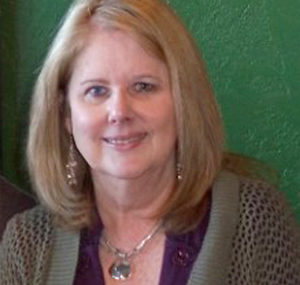
Patti was losing her vision to Fuchs’ dystrophy until she received two cornea transplants that saved her sight.
“Colors are brighter, more vibrant,” said Patti, a nurse from Overland Park, Kansas, about her vision after cornea transplantation. “The first thing I noticed was the colors. Everything was just so much brighter, the beautiful colors. Before I was seeing them, but everything looks better after the surgery.”
Before her transplants, Patti suffered from cataracts and Fuchs’ dystrophy, a hereditary disease in which corneal cells die, causing vision to decrease as fluid builds up in the cornea. Eventually, her vision was so bad she couldn’t see street signs, and her eye doctor treated her for cataracts in 2007. She received intraocular lens implants, which improved her vision somewhat, but it didn’t solve the problem. Patti had not heard of Fuchs’ dystrophy until her son was diagnosed with it during grand rounds at the University of Kansas Medical Center. “At this point, the whole family has been diagnosed with Fuchs’ except my two older sisters and my brother,” said Patti. The disease runs in families, affecting approximately 4 percent of people over age 40, according to the National Institutes of Health. Patti’s nephew has received corneal transplants to restore his vision, and her son will likely undergo transplantation as well to restore his vision.
Patti was able to make do with her reduced vision for many years, but in 2012, she was in a car accident caused by a drunk driver, sustaining injuries to her face and head. Upon seeing her swollen face, Patti visited her eye doctor for an examination to make sure the accident had not injured her eyes, too. It was during this check-up that he advised Patti to undergo transplantation to restore her sight. She received a corneal transplant in each of her eyes in September and November of 2012. “I wasn’t feeling very scared,” Patti said of the procedure. “As a nurse, I kind of knew what would happen. You’re awake, but you feel secure. The procedure was pretty painless.” Patti was eligible to receive donor tissue processed for DSAEK, which helps reduce the recovery period by being less invasive. “You don’t have any vision for three days after the transplant,” she reported. “But I had friends who know I like to read—they came over and read to me. They gave me books on tape to listen to also.”
The surgeries were successful. Now, with clear vision, Patti is better able to work, drive safely, and complete the tasks of everyday life. “Night driving is still kind of an issue with depth perception, but I feel really lucky to have gotten these corneas so I can continue to live,” she said. “I live by myself so if I lost my eyes, I’d be a mess. How would I buy groceries or pay my bills? You start thinking about all of these things, and so if you can help somebody else, you should.” Patti reports that she is registered to be an organ, eye, and tissue donor. “I encourage people to sign up for the registry,” she said. “You can change someone’s life.”
Patti’s life has changed for the better. She’s back to enjoying her favorite pastimes. “I’m much better at tennis than I used to be,” she reported. “I’ve noticed that. I enjoy the outdoors – tennis, bicycling—and I’m in a singles group. I also enjoy reading, TV, movies—all things that require sight, actually.
You can changes lives by joining the millions of Americans like Patti who have declared their choice to be donors. Visit the Donate Life America website or a local Department of Motor Vehicles office to register.

